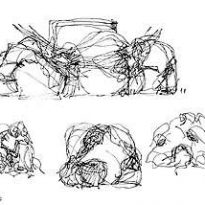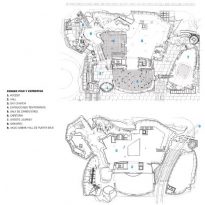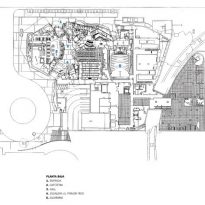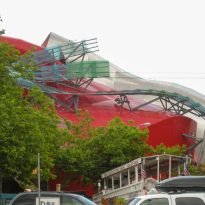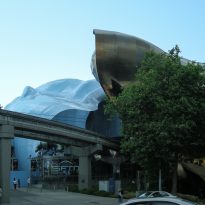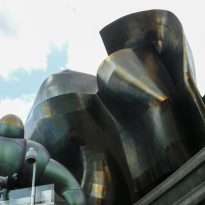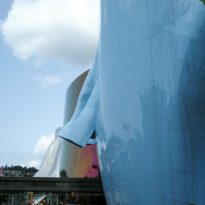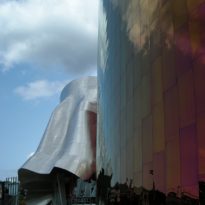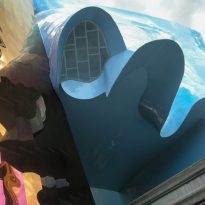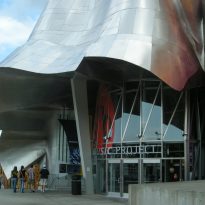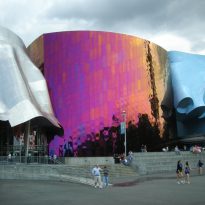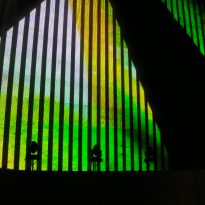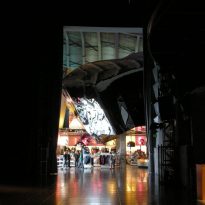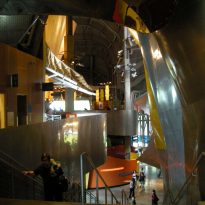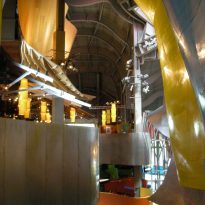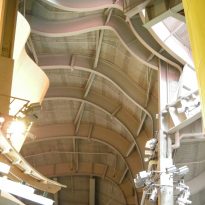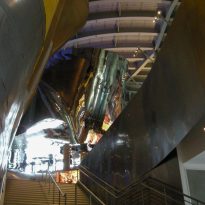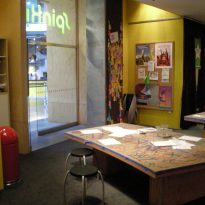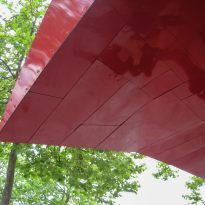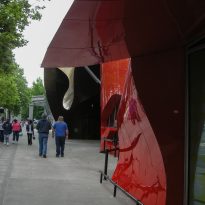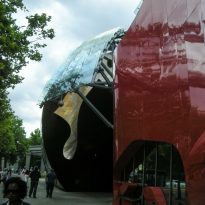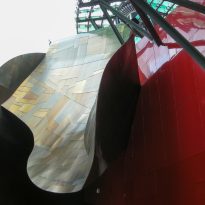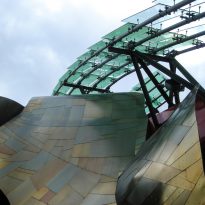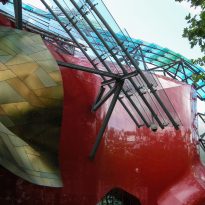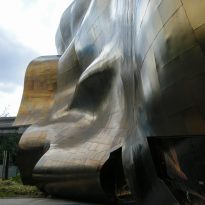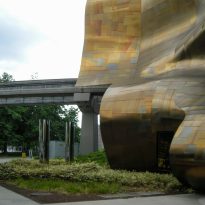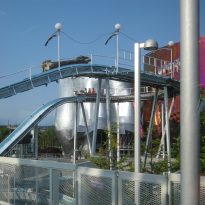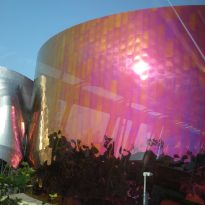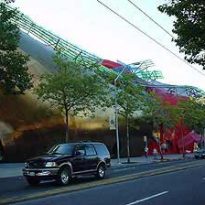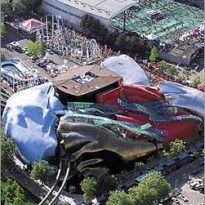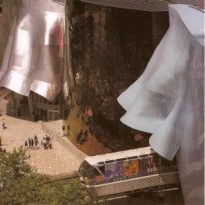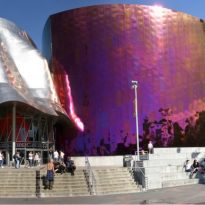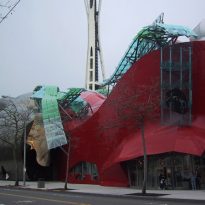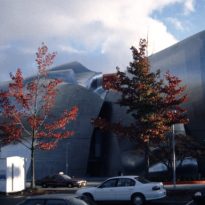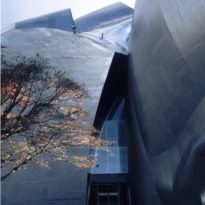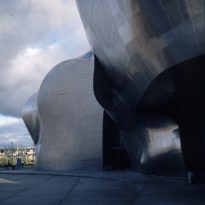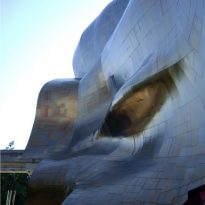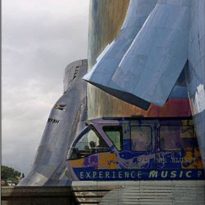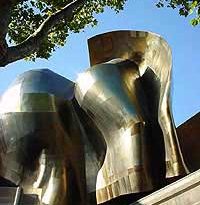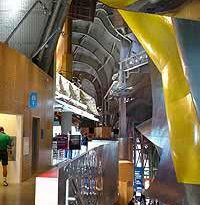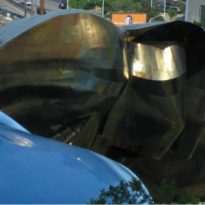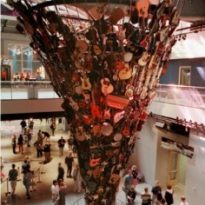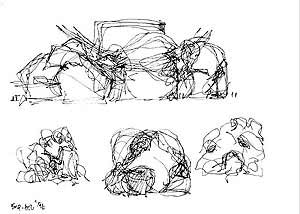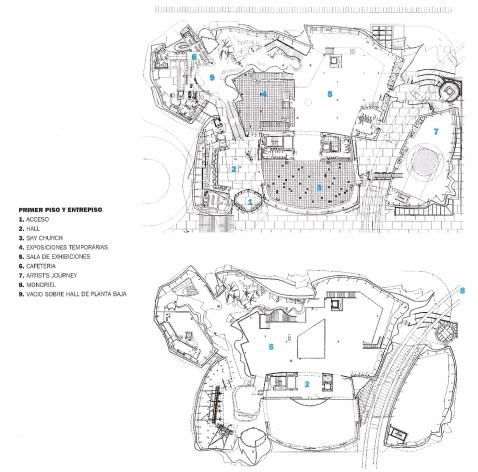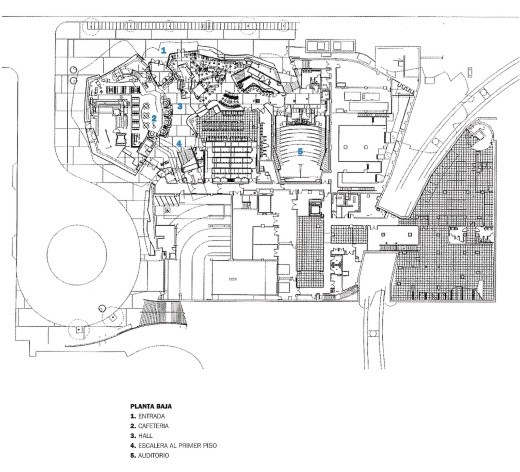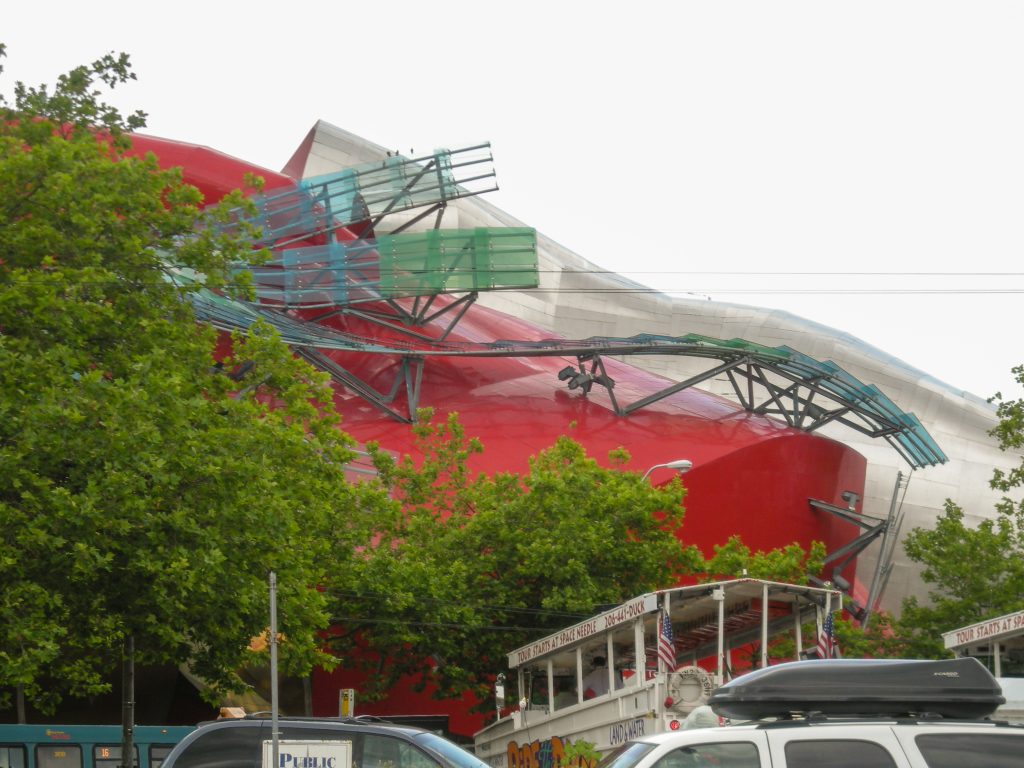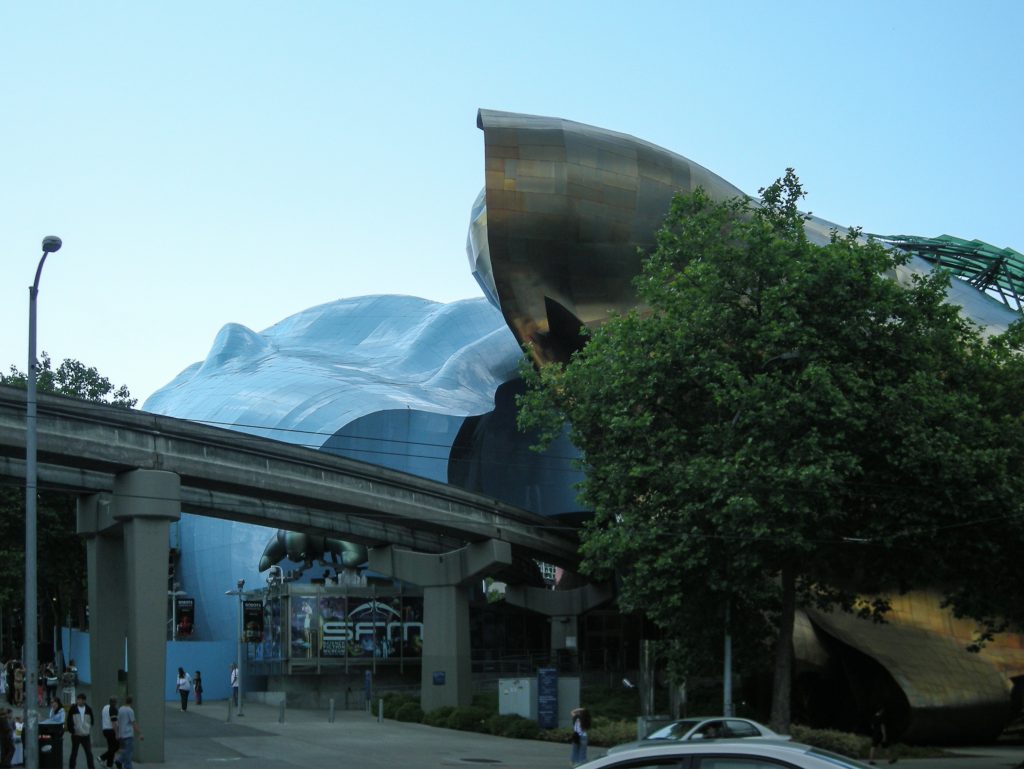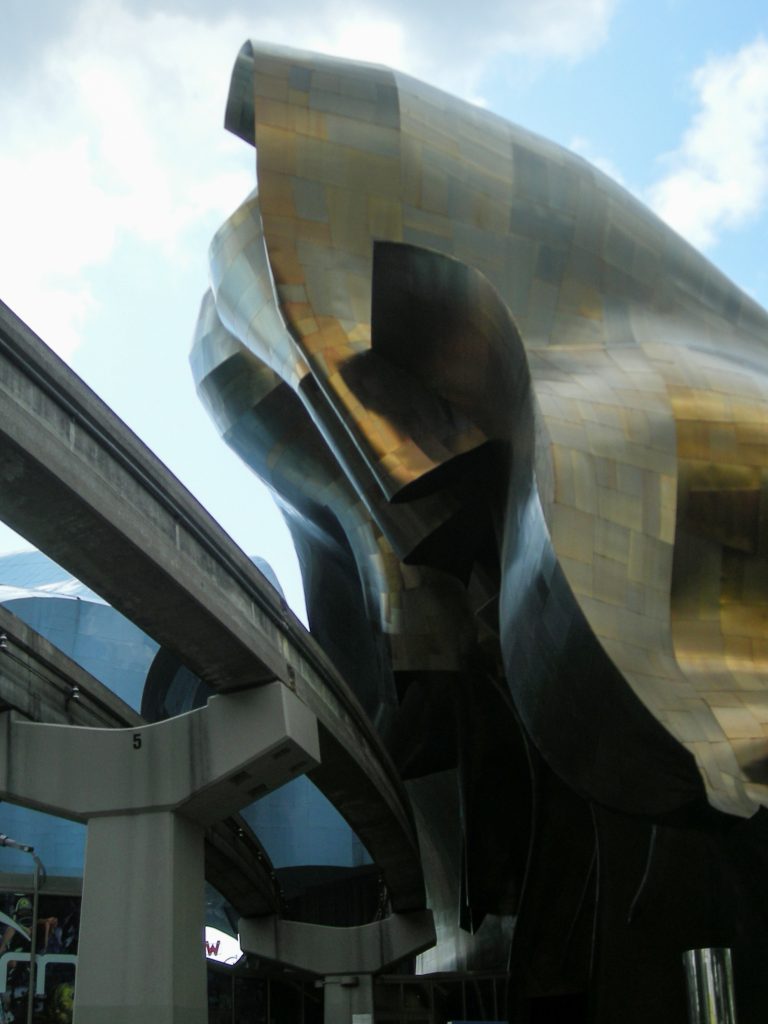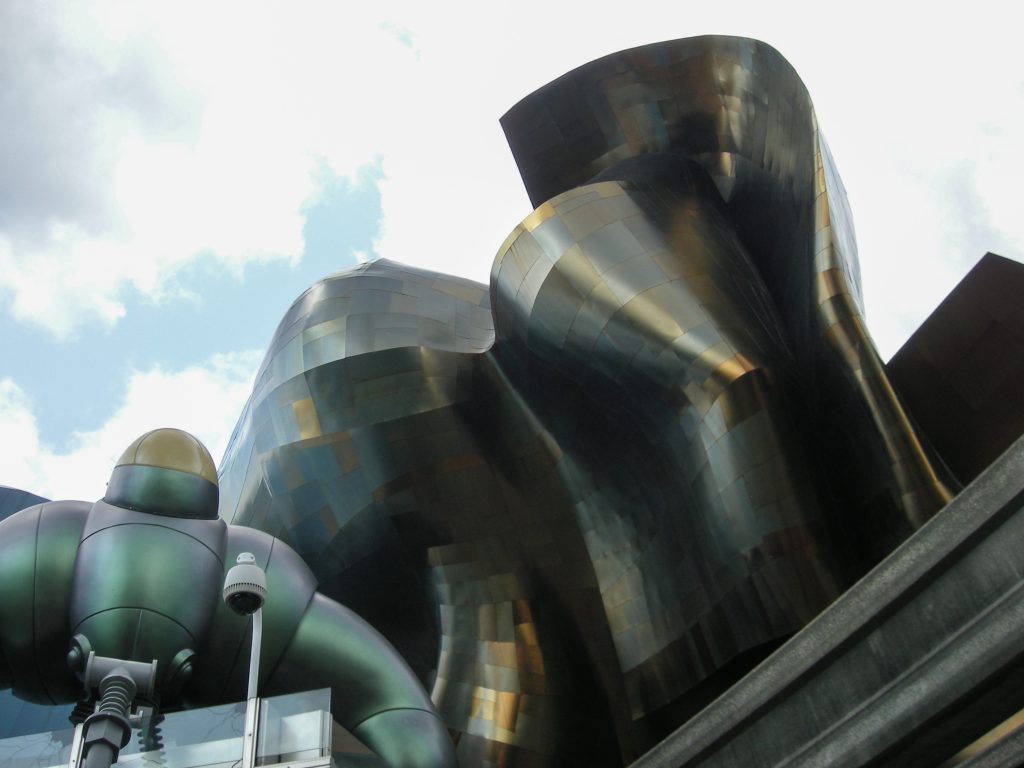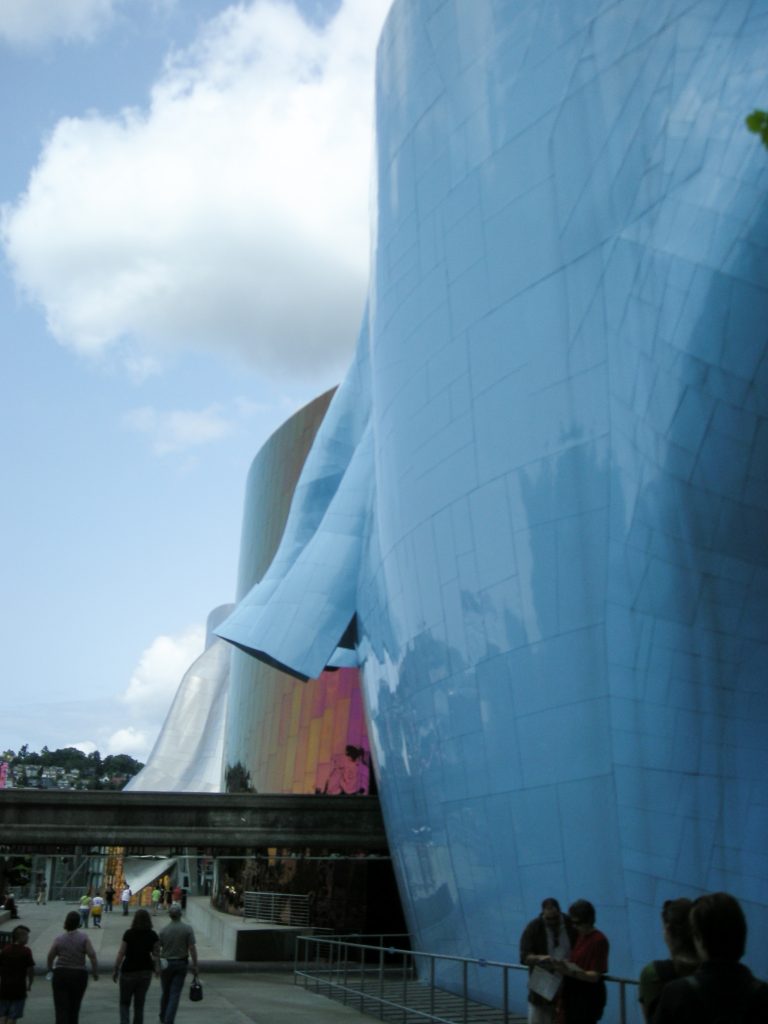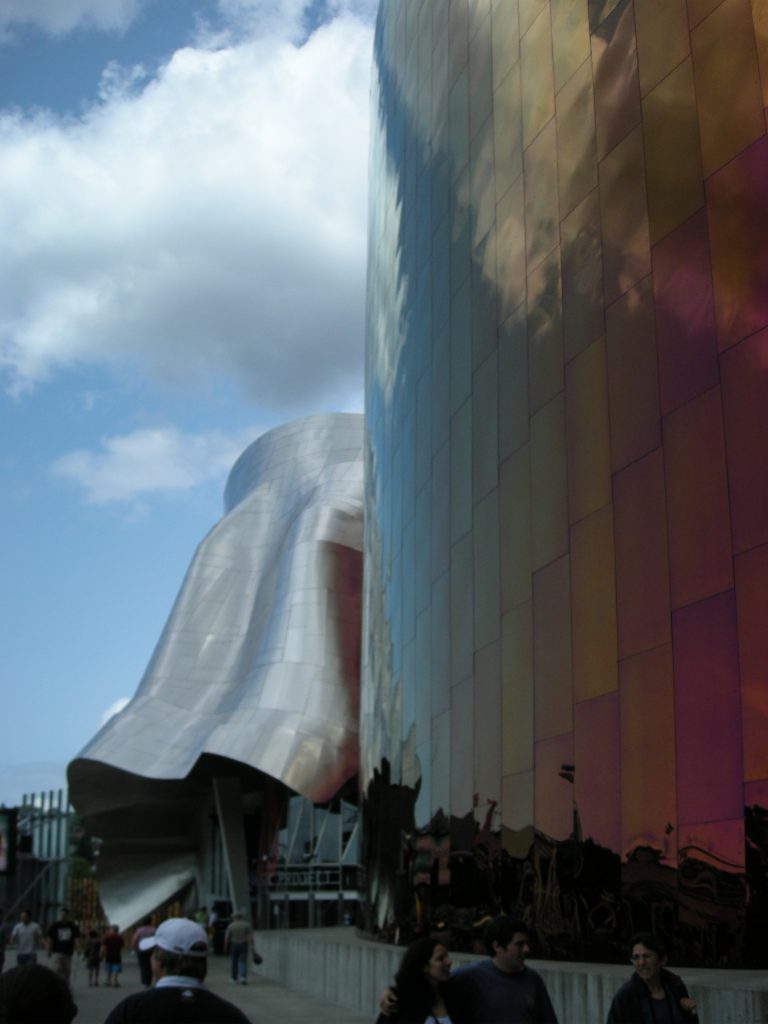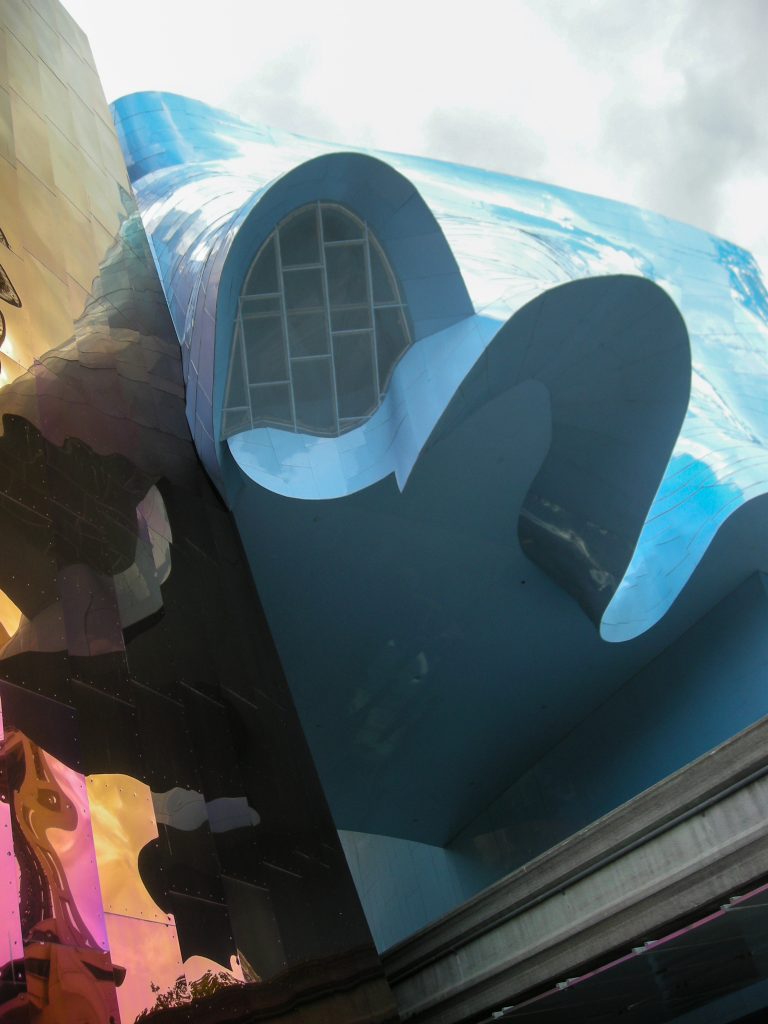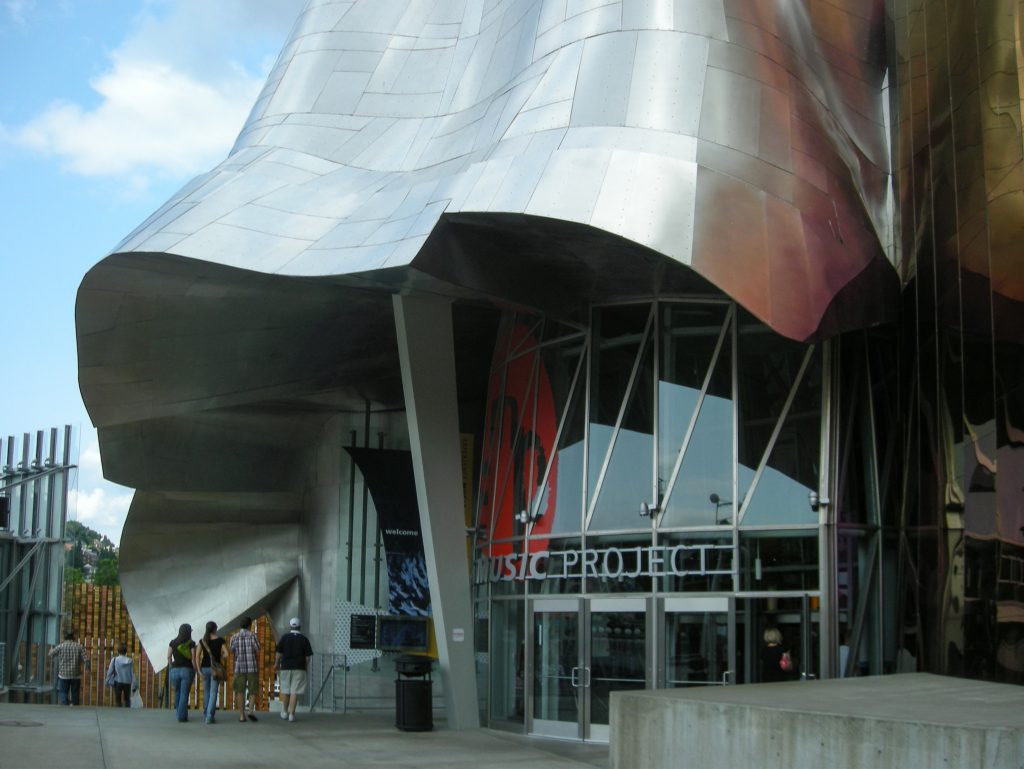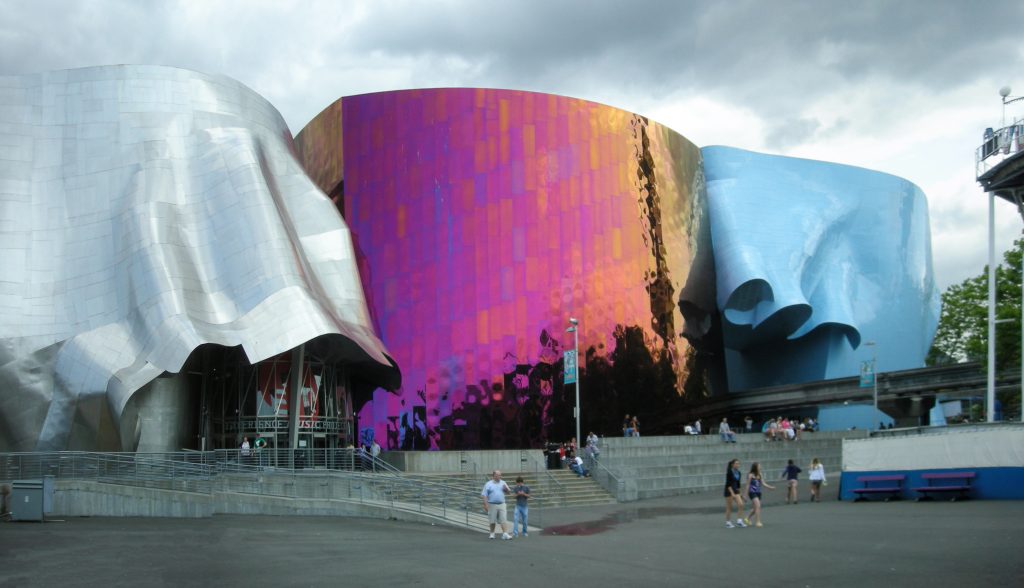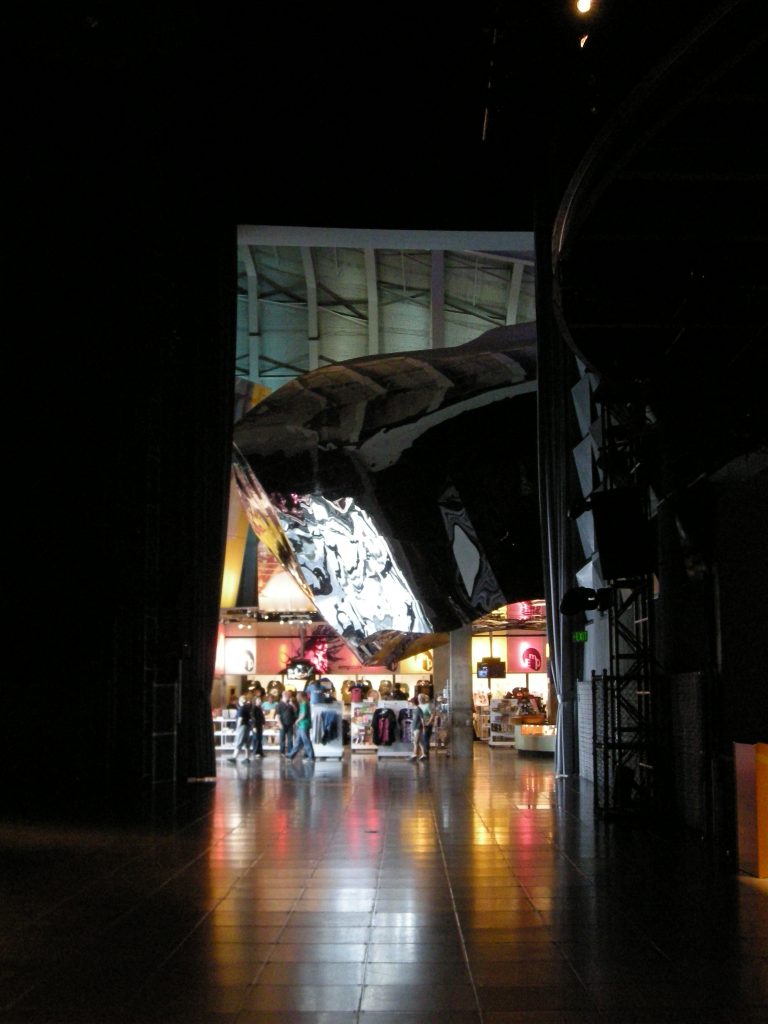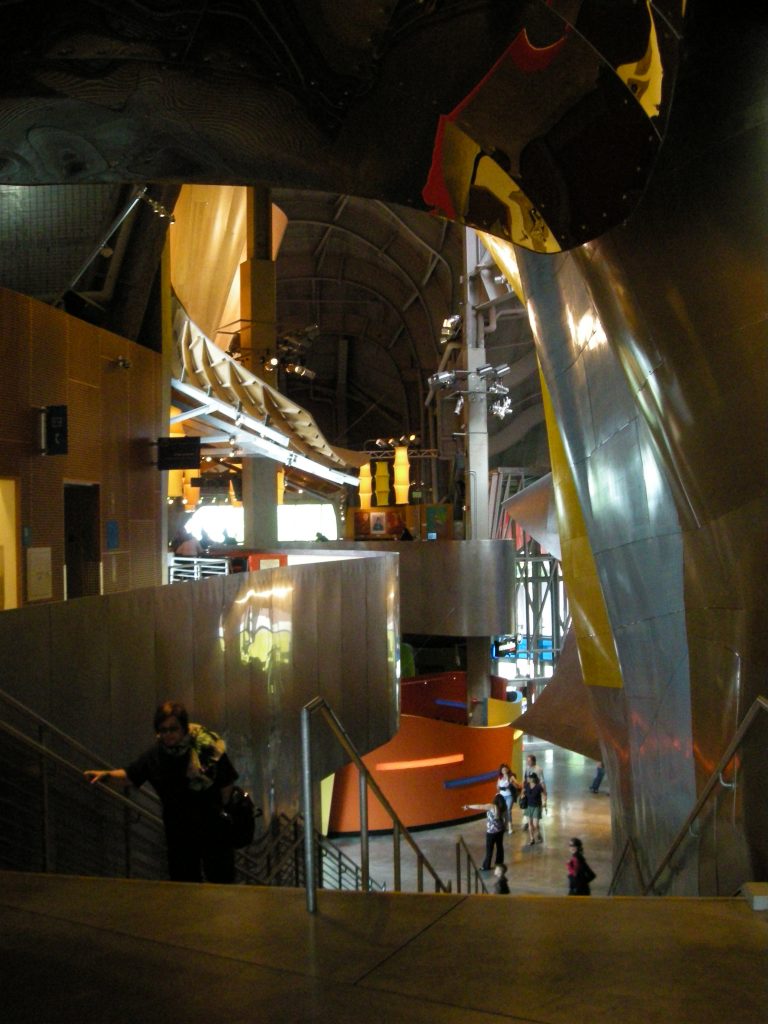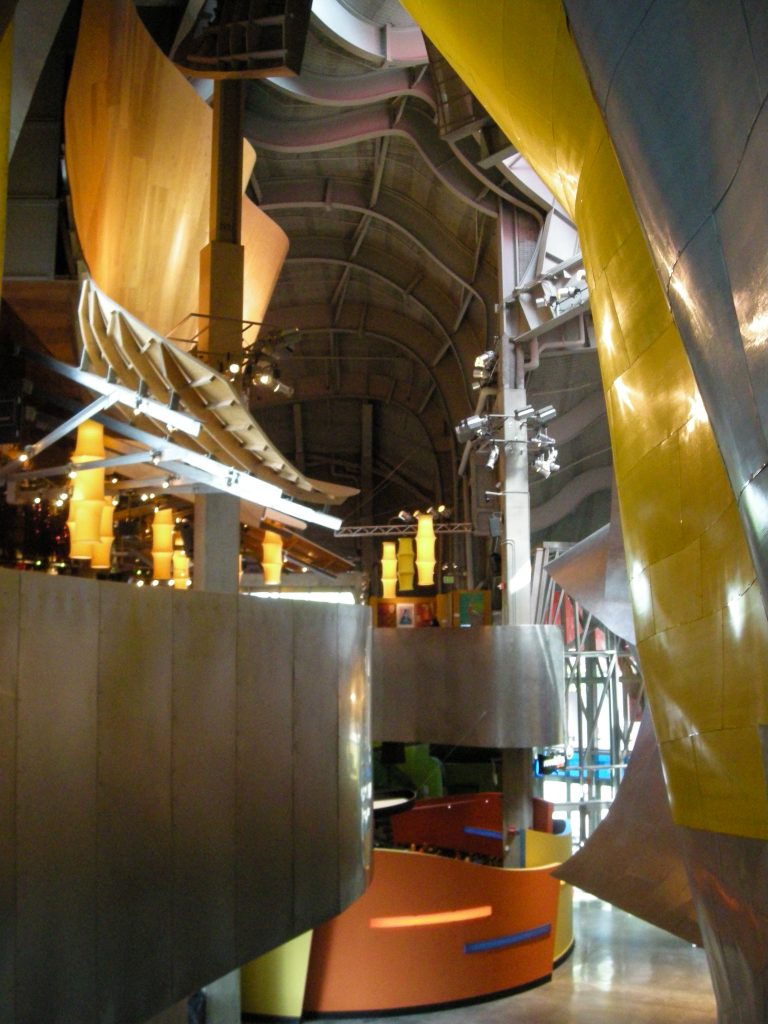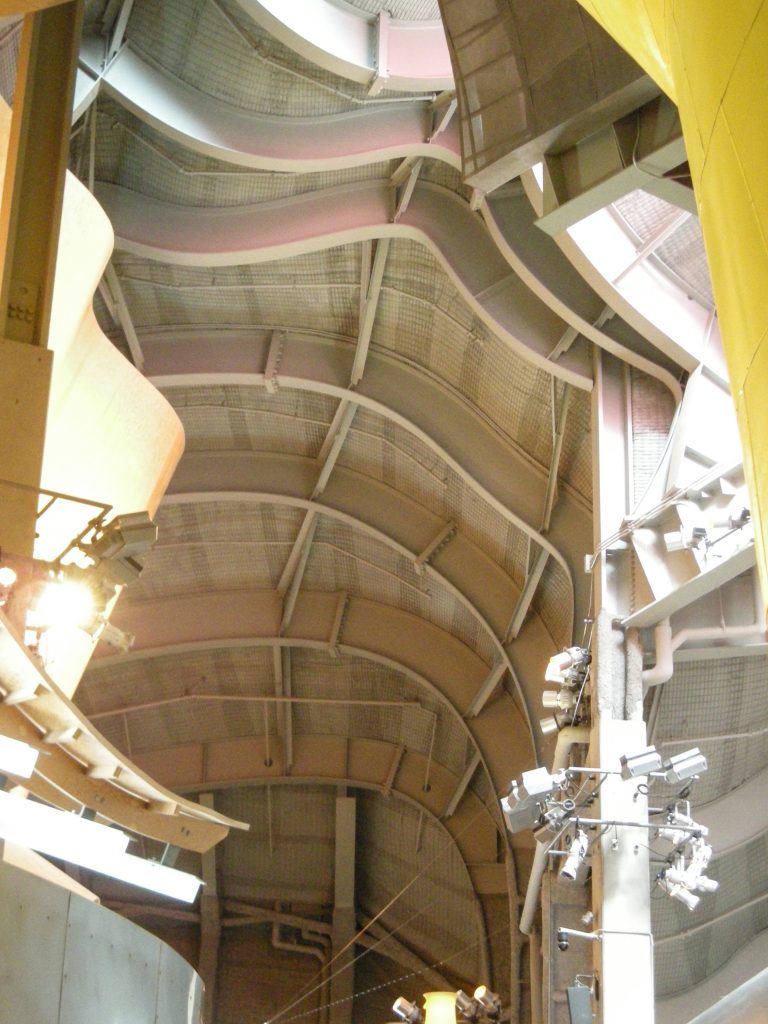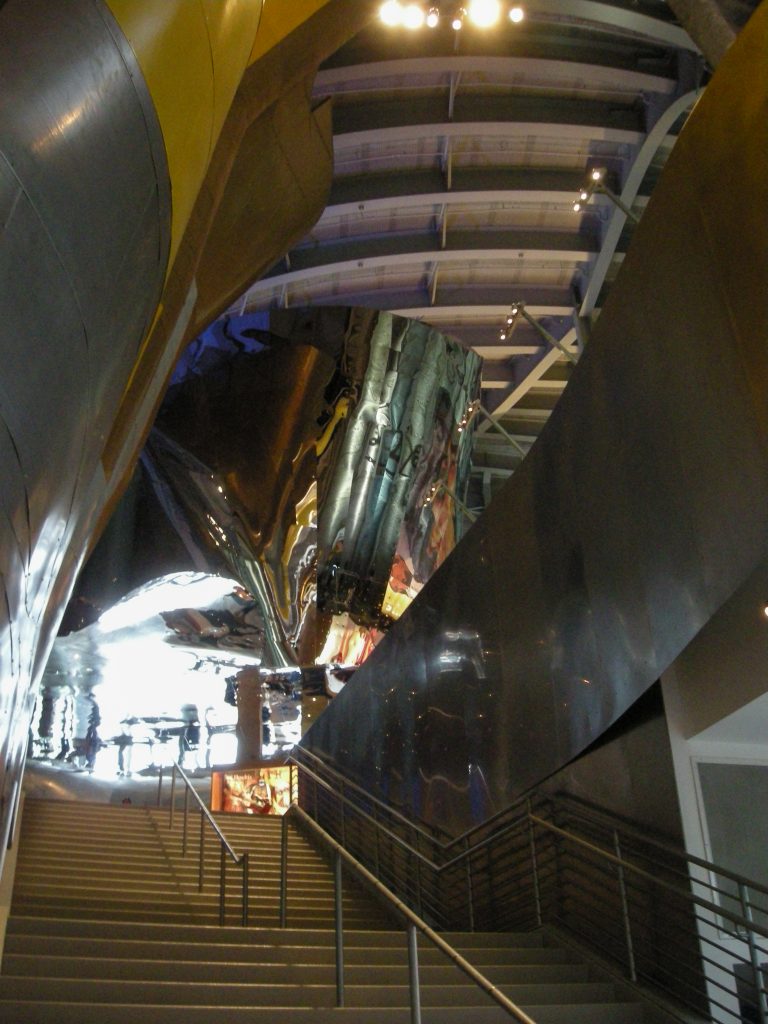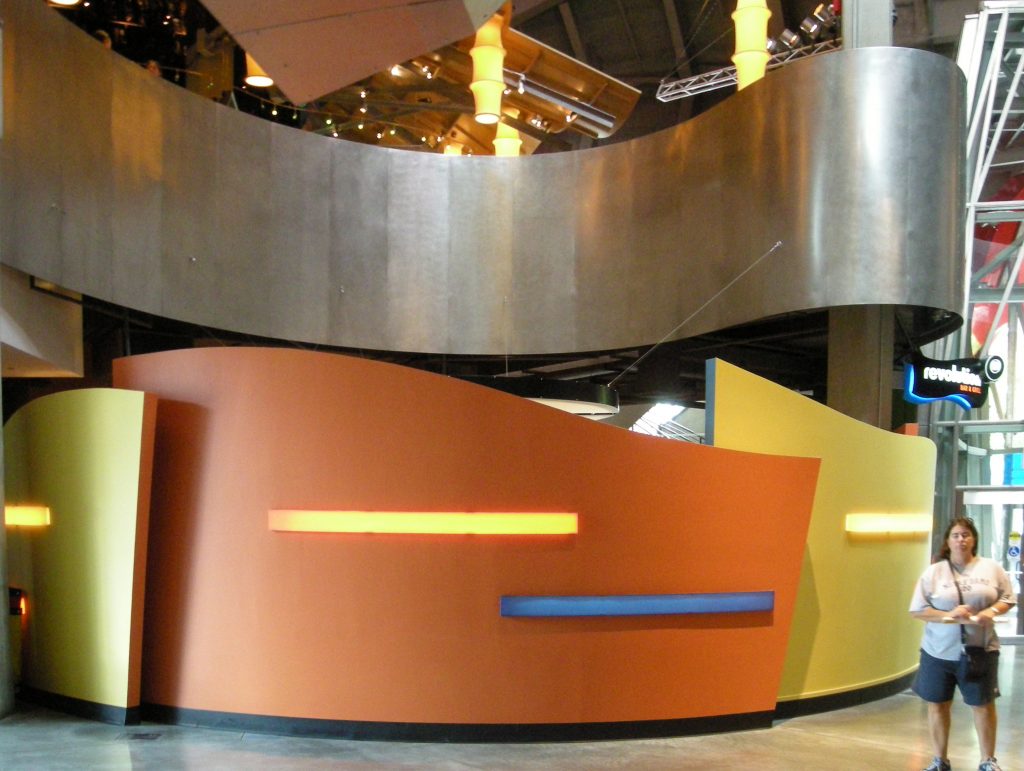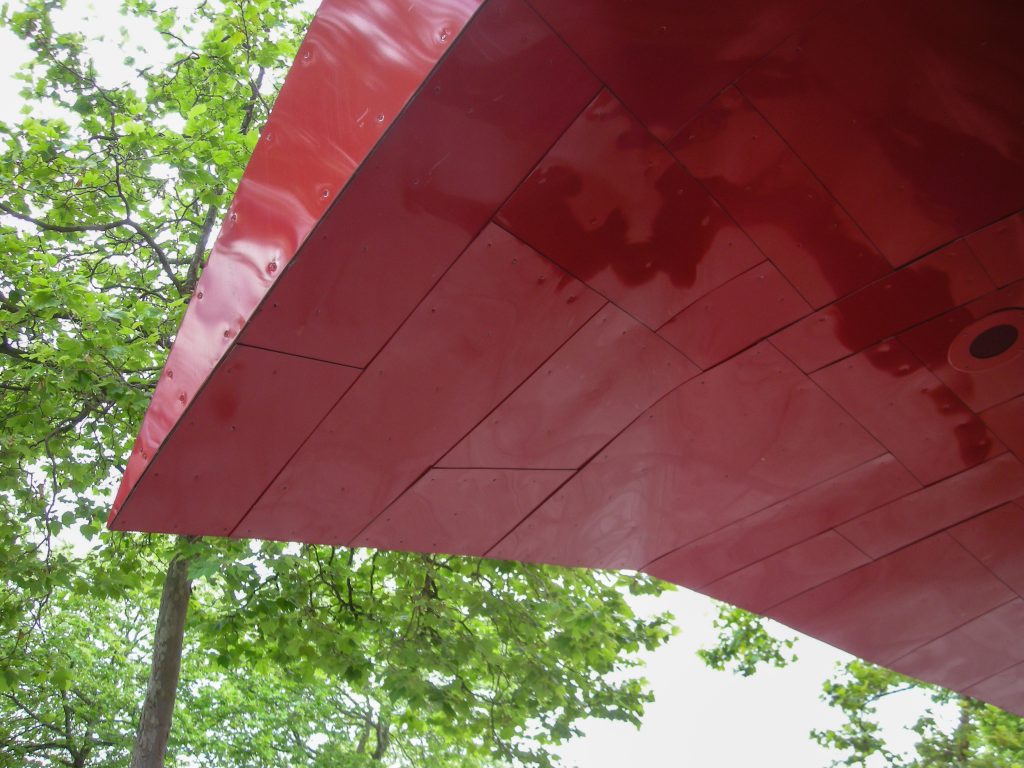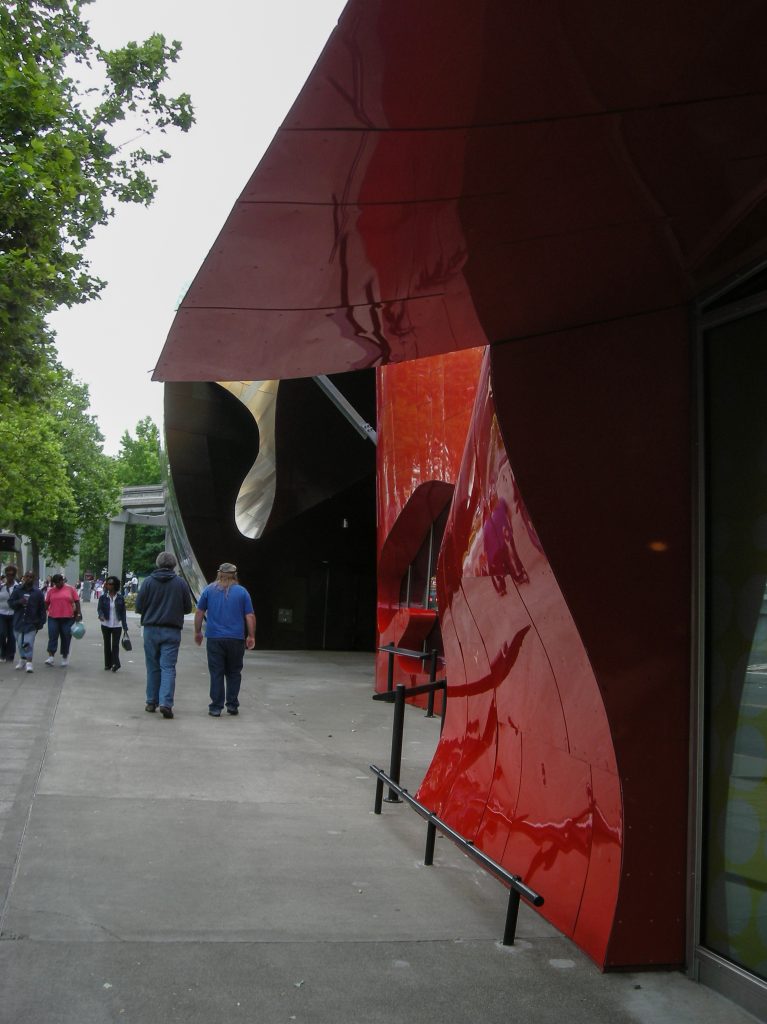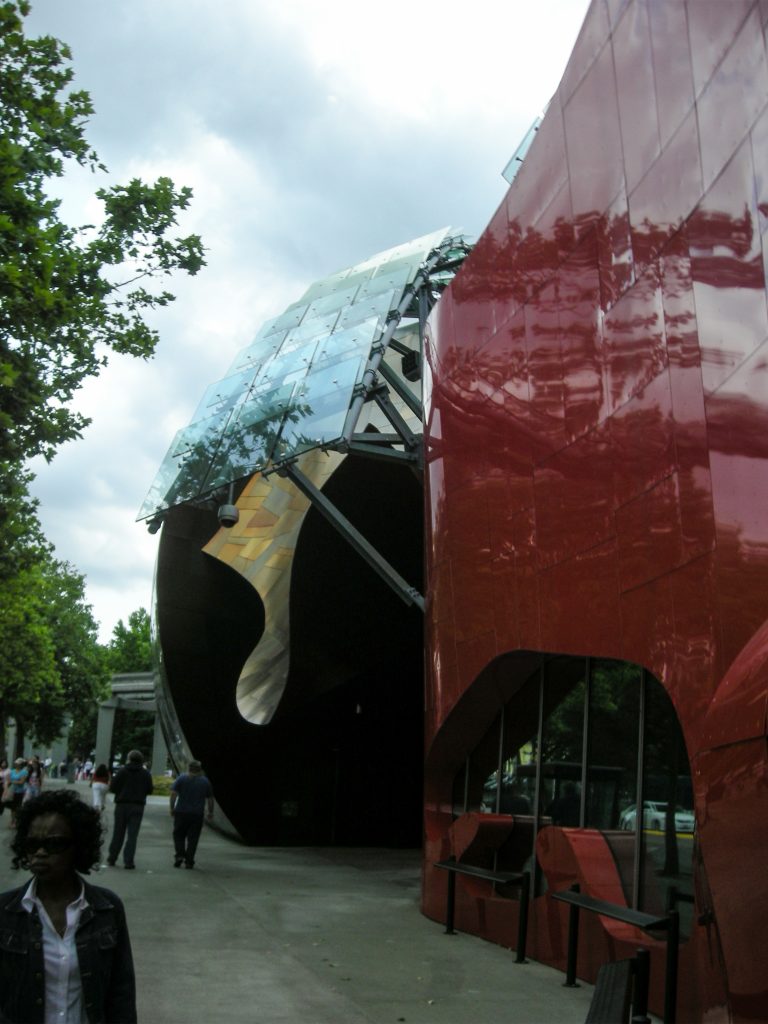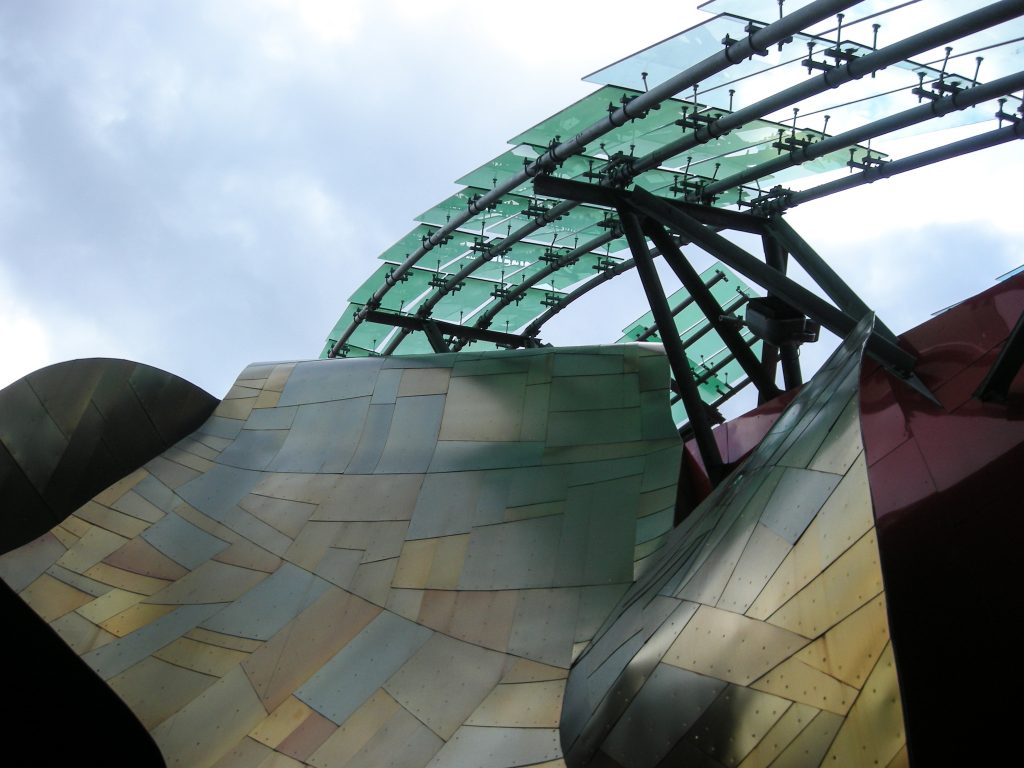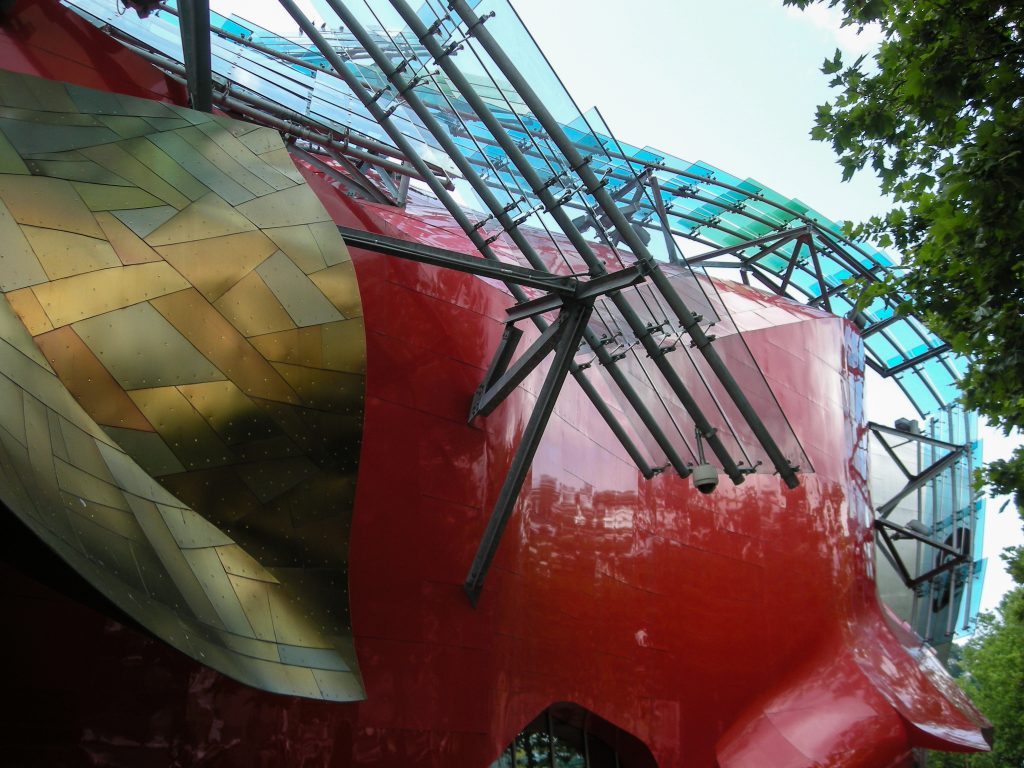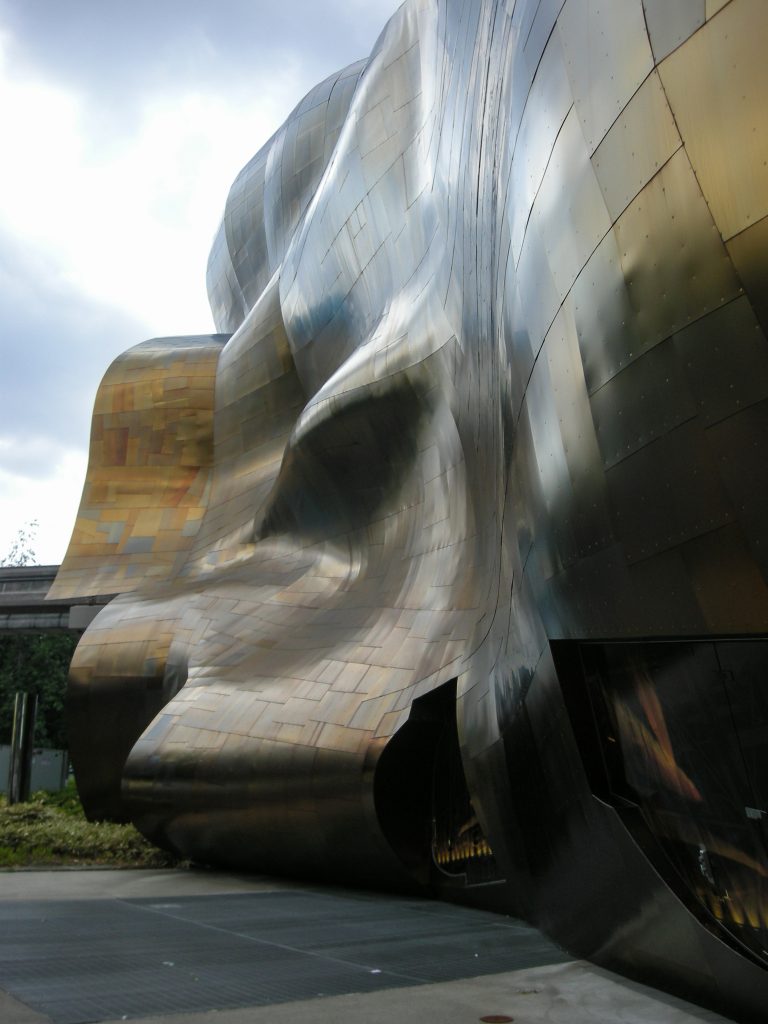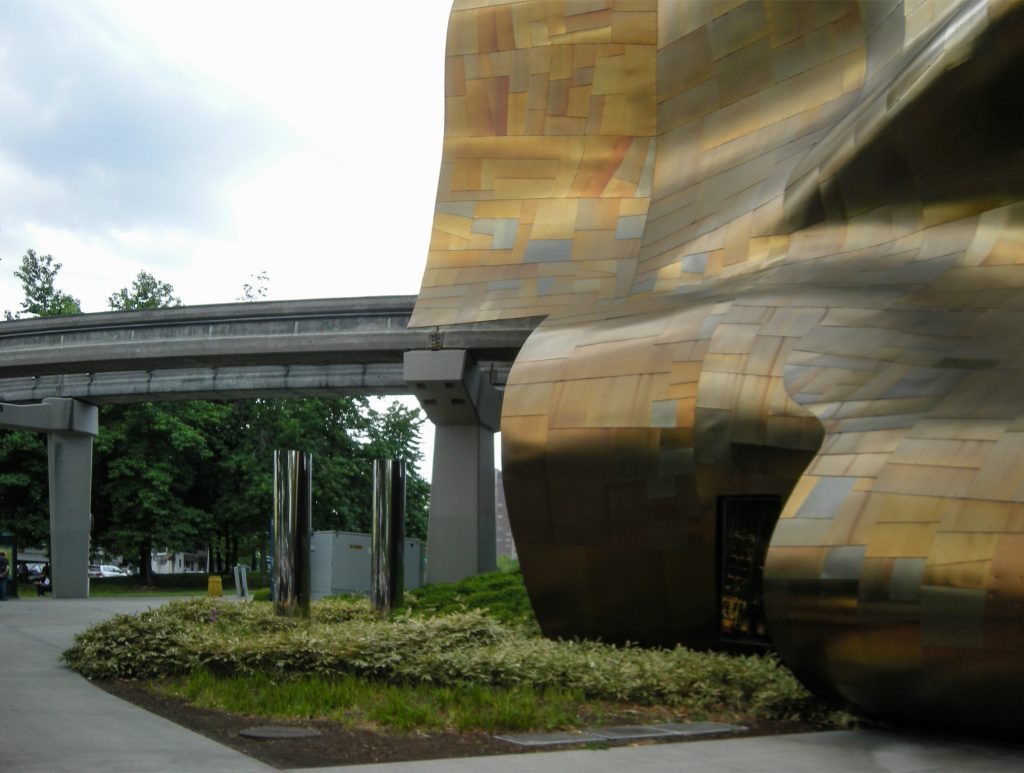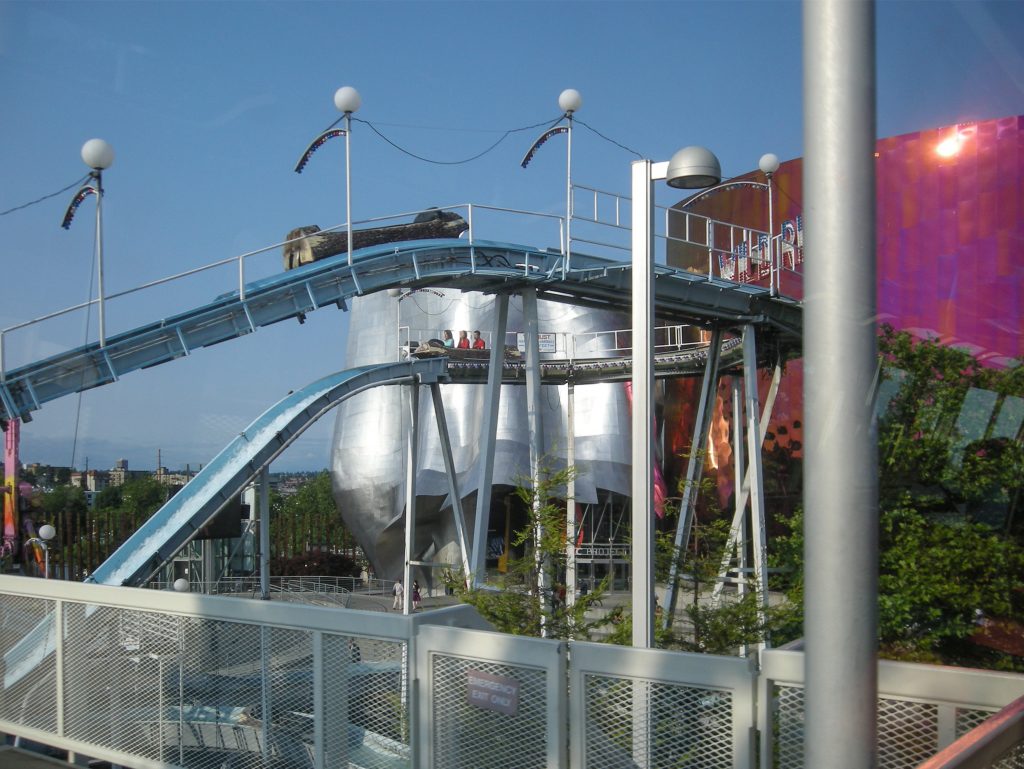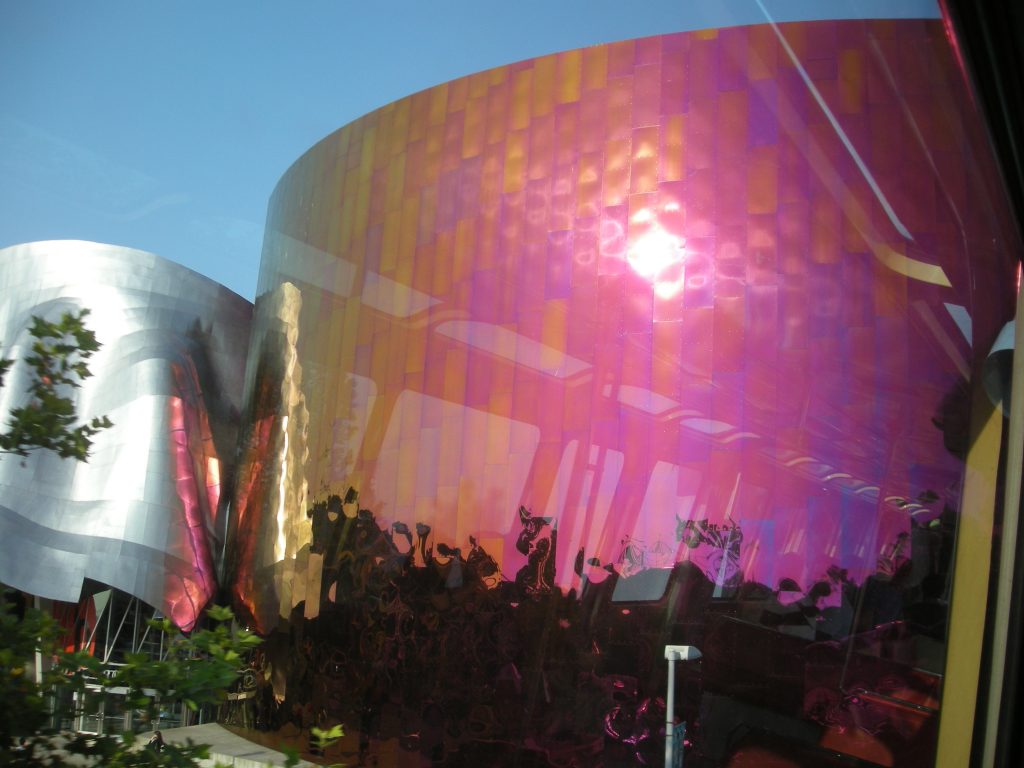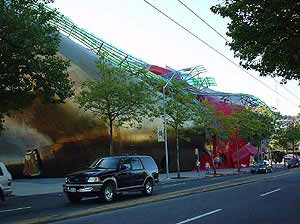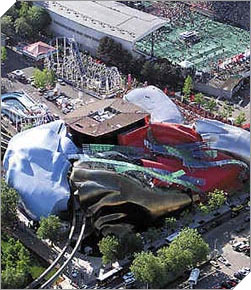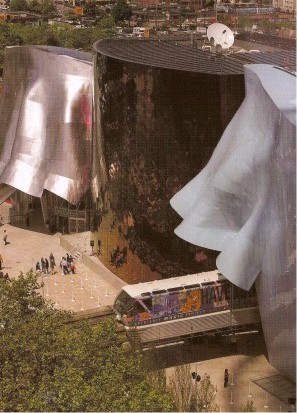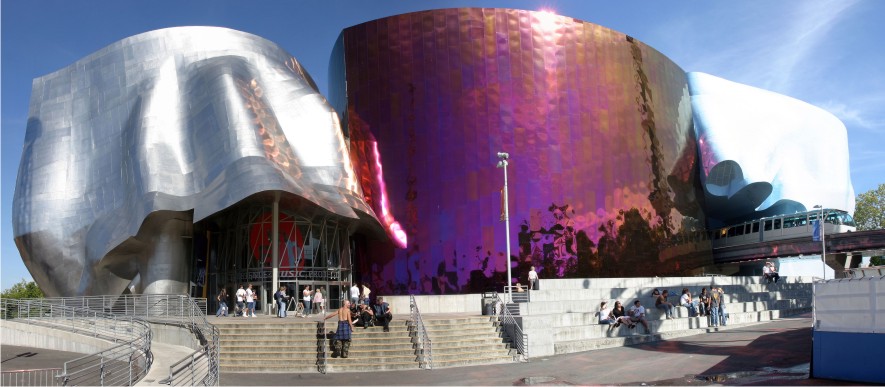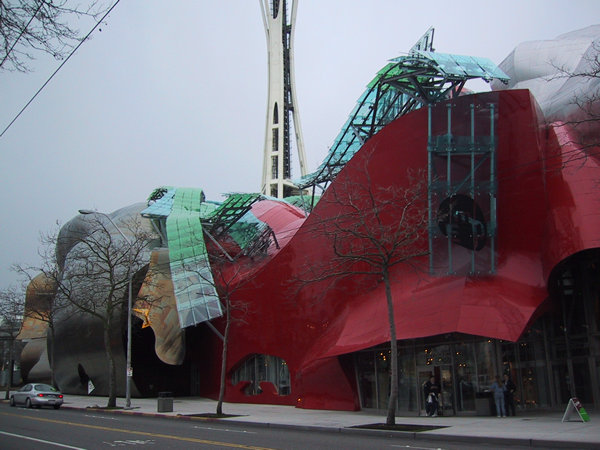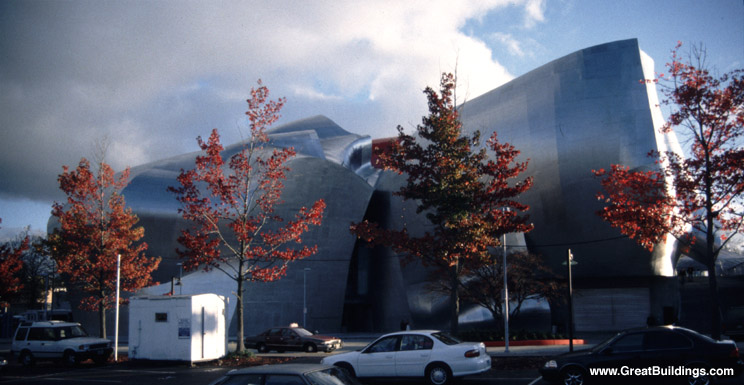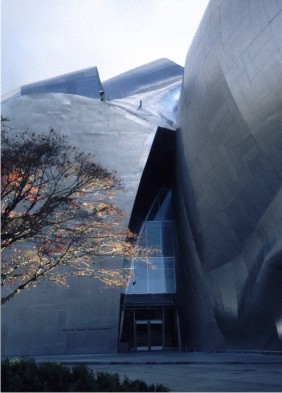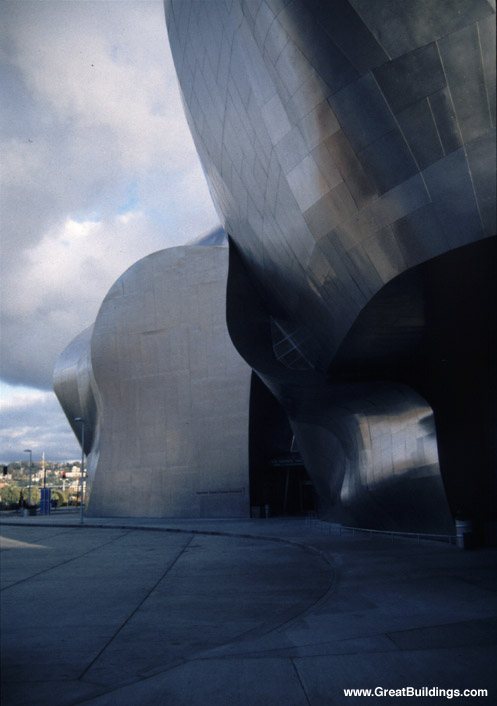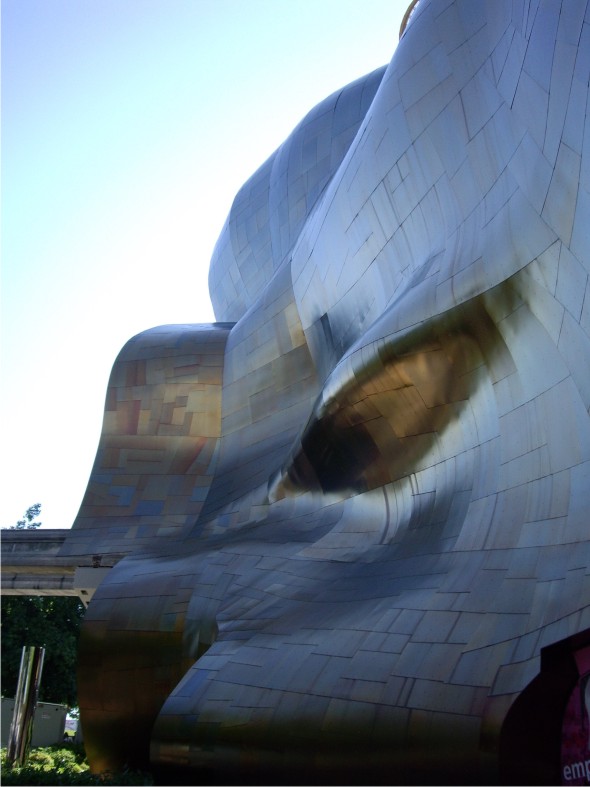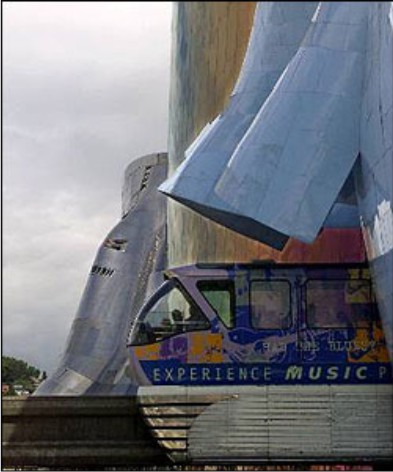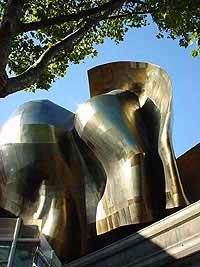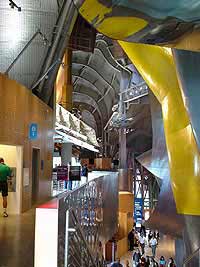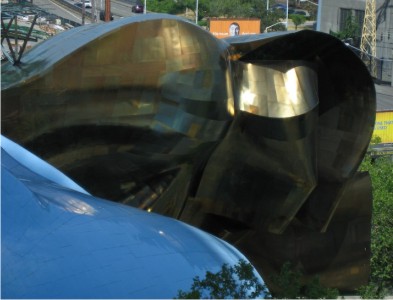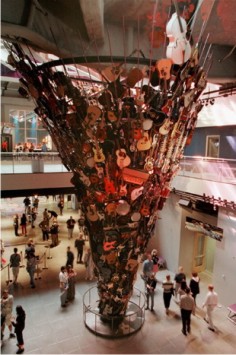Experience Music Project

Introduction
The Experience Music Project (EMP) was commissioned by the tycoon of computers and Microsoft cofounder Paul Allen of the architect Frank Gehry. It is a tribute to the musician Jimi Hendrix and the process of creative evolution of American music.
Meaning
The project idea was inspired by the Fender Stratocaster guitar that Hendrix used to destroy after each concert. Hence, the museum takes the form of electric guitar deconstructed that invites people to get into his spine to discover how the music was born.
This results in a fragmented and volumetry undulating, as the body of an amoeba. From the top as the complex is a conglomeration of various pieces of brightly colored plants. One of the volumes is crossed by the Seattle monorail, which travels through the interior of the museum.
In the EMP Gehry added an unusual element in their works, the use of colors with different textures fused, symbolizing the power and fluidity of American song. Inspired by the rock and roll, blue is because of the Fender guitar, the Les Paul with the gold and purple to the issue of Jimi Hendrix Purple Haze. Gehry added passages red as a tribute to the old vans that faded rock stars used to drive.
Everything played on the level of emotion.
Each takes an end-dye than the passage of days, reflecting the change of music.
Spaces
On the inside, each responds to a function space. It is organized into six thematic areas that celebrate the music world by responding to the exhibition program, educational and interactive activities to the public.
Admission is by the ground floor or first floor. From here you can access a central foyer and on the right, the Sky Church hall in honor of Hendrix. Crossing the main lobby, a bridge connecting the cafes and on the right is spread exhibition halls.
At the other end of the assembly, next to the tracks of the monorail is Artist’s Journey, a gallery that looks at the lives of artists. At other levels, there is a sound lab, a multimedia file and a music school. There is also a restaurant and shops.
Balconea on a mezzanine floor. Since there is pass the Seattle monorail. The building will lie on the tracks. One of the volumes has a large opening that moves the train. From there, passengers can take a look inside the museum.
The ceilings are high throughout the design modeled by irregular and perimeter walls have been left free by Gehry, precisely to encourage the involvement of the designers involved in the installation.
Materials
Stainless steel, aluminum and glass.
The restaurant industry is completely covered in wood.
Structure
The roof is made up of 21 thousand panels of stainless steel with shades of purple, silver and gold, aluminum and painted red and blue. Each panel has a unique shape and size and is cut and warped to fit your specific location. For this, we used a laser guided by a French 3D, Catia, developed for aerospace engineering.
